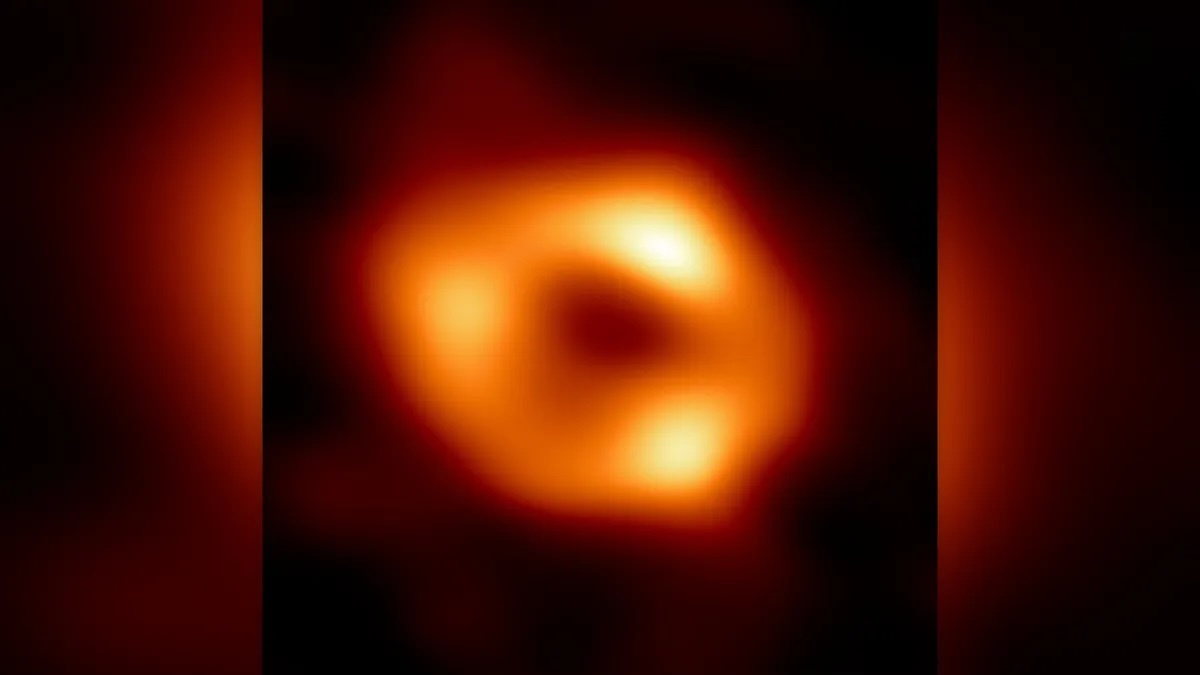5.03.2024
"I would end up pointing through the pavement, or down a street, and thinking, 'huh, that's where it is.'"

An image of Sagittarius A*, the supermassive black hole at the heart of the Milky Way, which scientists think is spinning as fast as it possibly can. (Image credit: EHT Collaboration)
A new iPhone app allows you to find the center of the Milky Way simply by using your smartphone — and it was made with ChatGPT.
The free app, called Galactic Compass, was developed by Matthew Webb and released on the Apple App Store on Feb. 15. It's designed to always point users in the direction of the Galactic Center, no matter Earth's position in the cosmos. Webb's inspiration for the app stems from years of teaching himself to always know where to look for the Galactic Center, which shifts as we move through space. He wrote about the reasoning behind Galactic Compass in a post on his personal website, which also announced the app's release.
"I would end up pointing through the pavement, or down a street, and thinking, 'huh, that's where it is,'" Webb said in the post. "Eventually then I had this picture of myself, and the Earth, and the solar system, and the center of the galaxy which had initially been whirling round me, and now it had flipped, I was turning around it. It was wildly situating."
The app itself is pretty straight forward: To locate the Galactic Center, open the app and place your iPhone on a flat surface. Then, a big green arrow will appear pointed in the direction of the Milky Way's core, where a supermassive black hole called Sagittarius A* resides. And that's about it.
Sagittarius A*, or Sgr A* for short, has an estimated mass millions of times that of our sun. While most black holes form from the collapse of massive stars, Sgr A* has far too much mass to have formed from a single star. Instead, a possible explanation is that multiple smaller black holes merged together to create this particular supermassive black hole.
Using a simple app to identify such an enigmatic structure in our universe is incredibly humbling. It puts into perspective our place in the unimaginable vastness of the cosmos, which is likely not something many people think about very often — at least I didn't before this new app was created.
Now, I can easily locate the direction of the Milky Way's core using a device that is used for virtually everything else I do throughout my day. And, the simplicity of the app's interface — a plain green arrow shaped from an extruded rectangle and squashed pyramid, as Webb puts it — makes comprehending such an unfathomable cosmic structure slightly less intimidating.
"Back in 2020, Robin Sloan said that an app can be a home-cooked meal," Webb wrote on his website, highlighting that it's enough for small-scale software to simply meet the needs of its developer. "Now I've cooked a meal that anyone with an iPhone can download. Probably only a couple dozen people will want it, but I want it in my pocket, and I want to share it with my friends, and here we are. And I can’t even cook!"

Webb developed the Galactic Compass interface using the AI tool ChatGPT and by integrating complex calculations for locating the Galactic Center in relation to the date and location of the user while they're on the app. This included a mathematical technique called quaternions, which represents spatial orientations and rotations of elements in 3D.
Essentially, Webb asked ChatGPT for step-by-step instructions on how to build the app through a series of questions he input into the chatbot. He then copied and pasted the code from ChatGPT into Xcode, making sure each step was complete before moving to the next. When he ran into an error, he would ask ChatGPT for a resolution and continue stringing pieces of code together to build his Galactic Compass, he explained in his post.
Webb programmed the app so that the 3D arrow will rotate in real-time in response to the device’s orientation. The phone must be flat so that the arrow on screen can properly orient itself pointing toward the direction of the galactic center as a fixed point.
"Galactic Compass is still pretty janky, to be sure," Webb said in the post on his website. "But it ain't bad for a collaboration between someone who can't build apps and an AI that is barely a year old."
Quelle: SC
